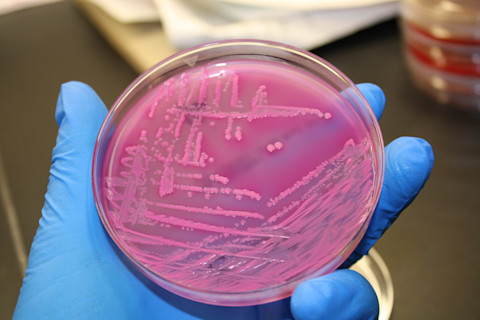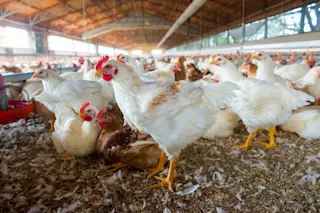
As genetically-modified microbes take on ever more tasks – from creating new pharmaceuticals to turning out clean fuel sources – researchers have searched for a way to biologically isolate them from their wild counterparts, so that if they were ever accidentally released, they wouldn’t be able to survive. Now, scientists releasing two separatepapers in the journal Nature think they have a solution. They unveiled two different approaches to modifying a strain of E. coli to make it dependent on artificial nutrients. In a controlled environment, such as a research lab or factory, scientists would provide that sustenance. But if the bacteria break free, they wouldn’t be able to make the compounds themselves, and would die.
No Escape
Scientists have previously used similar approaches, making GMO bacteria reliant on synthetic nutrients. But in the past, the GMO bacteria have evolved the ability to live without the synthetic nutrients. Bacteria have ejected the part of their DNA that made them reliant on the nutrients, or they figured out how to cobble together an equivalent of those nutrients from the natural world. In separate projects, teams led by Yale molecular biologist Farren Isaacs and Harvard molecular geneticist George Church have genetically modified E. coli so that it is totally dependent on synthetic amino acids. And in both cases that need is built in to multiple parts of the bacteria’s genome – 49 times in the Harvard study – so that the likelihood that the bacteria would evolve to overcome the restriction is unlikely. And both strains showed an undetectably small escape rate – the number of E. coli able to survive without being fed the synthetic amino acid.
Out in the Open
Church and Isaacs said that their work is most likely to be used in pharmaceutical or dairy operations – making cheese, yogurt or drugs. These processes happen in closed facilities and fermenters. Unlike in the fields, bees or breezes won’t spread genetically modified material around, but there is a risk of contamination if the microscopic bacteria get onto employees’ clothing or into the air. Meanwhile the scientists hope their research lays the groundwork for larger applications of modified bacteria in open-air settings, including for bioremediation – the use of living organisms to clean up polluted sites like landfills and oil spills. In these settings a reliance on synthetic amino acids mean the genetically modified organisms could be “contained” molecularly even if they are no longer physically contained.
Future Uses
The safety features aren’t the only appealing attribute of the modified E. coli featured in the new papers. The scientists also built in resistance to a number of viruses. That means the bacteria are safe from attack by viruses that can be devastating in food or pharmaceutical manufacturing – like when viral contamination caused a Genzyme Corp. plant to halt manufacturing in 2009, temporarily cutting off the medication supply for some patients. Church noted that the viral resistance could be an incentive to “sweeten the offer” and encourage companies to use “safe” GMOs. The technique could also provide intellectual property protection for industrial, pharmaceutical or food companies, since they could make their own GMOs dependent on specific synthetic amino acids, and other companies would have trouble replicating those modified organisms without the “key.” Such built-in IP protection could actually encourage collaboration between different companies, Isaacs said. “This is really motivated by anticipating the impact biotechnology will have over the next several decades, recognizing the importance of endowing these GMOs with more sophisticated functions, to have more safety measures going forward,” Isaacs told reporters. “Endowing safeguards will be important to allow the field to progress.” Image by micronerdbox via Flickr













